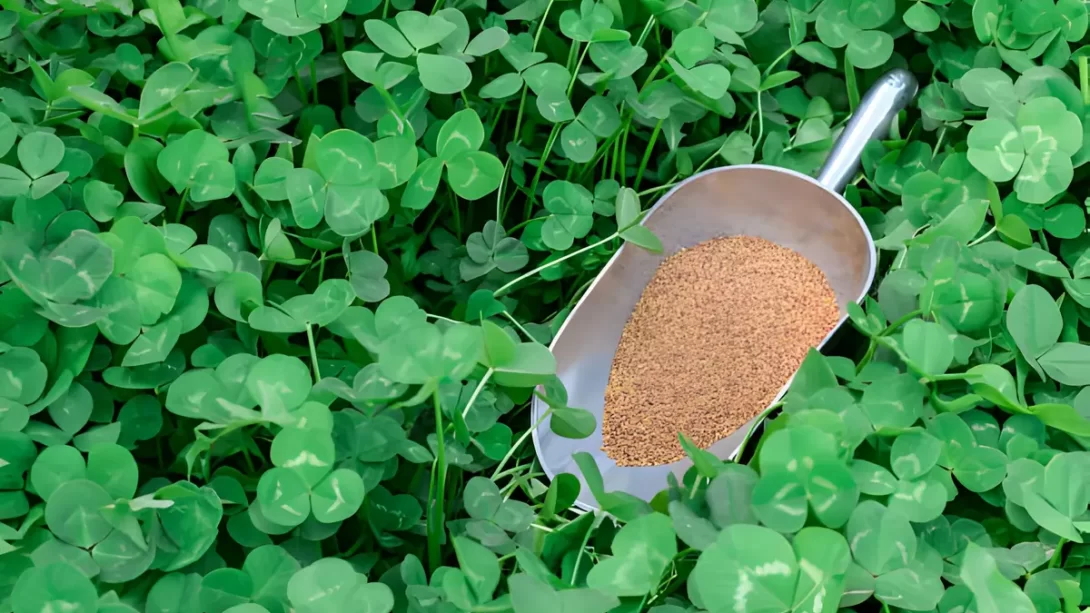Introducing clover into an existing lawn is a growing trend among gardeners seeking a more sustainable and low-maintenance lawn. Clover, once a standard part of the American lawn, is making a comeback for its numerous benefits. These include nitrogen-fixing properties that enrich the soil, drought tolerance, and a resistance to common pests. This article will guide you through the process of adding clover to your lawn, enhancing its health and appearance.
Clover and Its Varieties
The most commonly used clover types for lawns are White clover (Trifolium repens) and Red clover (Trifolium pratense). White clover is smaller and more common in residential lawns, appreciated for its durability and low growth habit. It thrives in poor soil and reduces the need for fertilization. Red clover, larger and taller, is often used in agricultural settings. It’s important to choose a clover type that suits your lawn’s environment and your aesthetic preferences. Each variety has its unique advantages and growth patterns, so understanding these will help you make the best choice for your lawn.
Preparing for Clover Planting
To successfully incorporate clover into your lawn, start by assessing your lawn’s current condition. Identify areas with poor grass growth, as these may be ideal spots for clover. Conduct a soil test to understand your soil’s pH and nutrient levels. Clover prefers a pH between 6.0 and 7.0 and can thrive in less fertile soil conditions than grass. Before planting, mow your lawn shorter than usual to allow clover seeds better access to the soil. This step is crucial for ensuring good seed-to-soil contact, which is essential for seed germination and establishment.
Choosing the Right Time to Plant Clover
Timing is key when planting clover in your lawn. For most climates, the best times are spring and early fall. These seasons provide the mild temperatures and adequate moisture that clover seeds need for successful germination and growth. In spring, aim to plant after the last frost but before the full heat of summer. In fall, plant enough weeks before the first expected frost to allow the clover to establish. Avoid hot, dry periods as extreme conditions can hinder germination and growth.
Selecting and Mixing Clover Seeds
Selecting high-quality clover seeds is essential for a healthy lawn. Look for seeds that are fresh and have a high germination rate. If you wish to maintain some grass in your lawn, consider mixing clover seeds with grass seeds. This creates a balanced lawn ecosystem, where the clover enriches the soil for the grass, and the grass provides structure for the clover. The ideal mix ratio can vary, but a general guideline is to mix one part clover seed with about four parts grass seed.
Planting the Clover
Planting clover is a straightforward process. Begin by evenly distributing the clover seeds over your lawn. You can use a broadcast spreader for larger areas or hand-sow in smaller spaces. Aim for uniform coverage to avoid clumping. After sowing, gently rake the area to help the seeds make good contact with the soil. Lightly water the seeded area, ensuring the soil stays moist but not waterlogged, as overwatering can cause the seeds to rot. Consistent, light watering promotes better seed germination and establishment.
Aftercare for Clover Establishment
After planting, proper aftercare is crucial for the successful establishment of clover in your lawn. Clover requires consistent moisture to germinate, so water your lawn lightly but regularly, especially during dry spells. However, avoid overwatering, as excessive moisture can lead to seed rot. Once the clover begins to sprout and establish, you can reduce watering frequency.
Fertilization is generally not necessary for clover, as it is a nitrogen-fixing plant that enriches the soil naturally. However, if your lawn has other grasses, a balanced fertilizer without high nitrogen content can support both the grass and clover. Regarding mowing, clover typically thrives at a slightly higher mowing height than conventional grass. Keeping your lawn mowed to about 3 inches will encourage clover growth while maintaining a neat appearance.
Maintaining a Clover Lawn
Long-term maintenance of a clover lawn is relatively straightforward. Clover is resilient and requires less watering than traditional grass lawns. Mowing should be done as needed, depending on the desired lawn height and aesthetic. Regular mowing also helps prevent the clover from flowering, although some homeowners appreciate the flowers for their beauty and appeal to pollinators.
Weed control in a clover lawn requires a different approach, as many common herbicides will kill clover. Hand-pulling or spot-treatment with clover-safe products is recommended for significant weed issues. Keep an eye out for pests or diseases, though clover is generally quite robust and resistant to common lawn problems.
Conclusion
Incorporating clover into an existing lawn offers numerous benefits, including improved soil health, reduced maintenance, and enhanced biodiversity. A clover lawn can be both beautiful and environmentally friendly, supporting a more sustainable approach to lawn care. By following these steps and providing ongoing care, you can enjoy the lush, green, and eco-friendly lawn that clover can help create.



